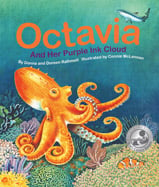Alignment to Standards for MD

| Grade | Number | Standard |
|---|---|---|
| 1 | SC-1.3.0.A.1. | Compare and explain how external features of plants and animals help them survive in different environments. |
| 1 | SC-1.3.0.A.1.b | Compare similar features in some animals and plants and explain how each of these enables the organism to satisfy basic needs. |
| 1 | SC-1.3.0.A.1.c | an organisms external features contribute to its ability to survive in an environment. |
| 1 | SC-1.3.0.A.1.d | Classify organisms according to one selected feature, such as body covering, and identify other similarities shared by organisms within each group formed. |
| 1 | SC-1.3.0.B.2. | Provide evidence that all organisms are made of parts that help them carry out the basic functions of life. |
| 1 | SC-1.3.0.B.2.a | humans and other animals have different body parts used to seek, find, and take in food. |
| 1 | SC-1.3.0.E.1. | Describe some of the ways in which animals depend on plants and on each other. |
| 1 | SC-1.3.0.E.1.a | Examine organisms in a wide variety of environments to gather information on how animals satisfy their need for food. |
| 1 | SC-1.3.0.E.1.c | Some animals eat only other animals |
| 2 | SC-2.3.0.F.1. | Explain that organisms can grow and survive in many very different habitats. |
| 2 | SC-2.3.0.F.1.a | Investigate a variety of familiar and unfamiliar habitats and describe how animals and plants found there maintain their lives and survive to reproduce. |
| 2 | SS-2.3.0.B.1.b | Describe and classify regions using climate, vegetation, animal life, and natural/physical features |
| 4 | SC-4.3.0.A.1.a | a variety of animals or plants in both familiar and unfamiliar environments. |
| 4 | SC-4.3.0.C.1.c | some likenesses between parents and offspring are inherited (such as eye color in humans, nest building in birds, or flower color in plants) and other likenesses are learned (such as language in humans ) |
| 4 | SC-4.3.0.D.1.a | Describe ways in which organisms in one habitat differ from those in another habitat and consider how these differences help them survive and reproduce. |
| 4 | SC-4.3.0.D.1.b | Explain that the characteristics of an organism affect its ability to survive and reproduce. |
| 4 | SC-4.3.0.F.1.a | Explain ways that individuals and groups of organisms interact with each other and their environment. |
| 4 | SC-4.3.0.F.1c | Identify and describe the interactions of organisms present in a habitat: Beneficial interactions: nesting, pollination, seed dispersal, oysters filtering as in the Chesapeake Bay, etc. |
| 5 | SC-5.3.0.A.1. | Explain the idea that in any particular environment, some kinds of plants and animals survive well, some less well, and some cannot survive at all. |
| K | SC-K.3.0.A.1.a | features (observable parts) of animals and plants that make some of them alike in the way they look and the things they do. |
| K | SC-K.3.0.A.1.b | features that make some animals and some plants very different from one another. |
| K | SC-K.3.0.A.1.c | Identify a feature that distinguishes animals that fly (as an example) from animals that cannot and examine a variety of animals that can fly to discover other similar features they might share. |
| K | SC-K.3.0.A.1.d | Compare ideas about how the features of animals and plants affect what these animals are able to do. |
| K | SC-K.3.0.A.2.c | similarities in what both humans and other animals are able to do because they possess certain external features. |
| K | SC-K.3.0.D.1. | living things are found almost everywhere in the world and that there are somewhat different kinds of living things in different places. |
| K | SC-K.3.0.D.1.a | Observe, describe, and give examples and describe the many kinds of living things found in different places in Maryland. |
| K | SC-K.3.0.D.1.b | describe and compare living things found in other states such as Texas and Alaska to those found in Maryland. |
| K | SC-K.3.0.D.1.c | Explain that the external features of plants and animals affect how well they thrive in different kinds of places. |
| K | SC-K.3.0.E.1. | Develop an awareness of the relationship of features of living things and their ability to satisfy basic needs that support their growth and survival. |
| K | SC-K.3.0.F.1. | Investigate a variety of familiar places where plants and animals live to describe the place and the living things found there. |
| K | SC-K.3.0.F.1.c | Describe ways that animals and plants found in each place interact with each other and with their environment. |
| PK | SC-PK.3.0.A.1.a | how some animals are alike in the way they look and in the things they do. |
| PK | SC-PK.3.0.A.1.d | Identify some of the things that all animals do, such as eat, move around and explain how their features (observable parts) help them do these things. |
| PK | SS-PK-3.6.0.E.1.a | Distinguish factual from fictional information (anthropomorphic) |